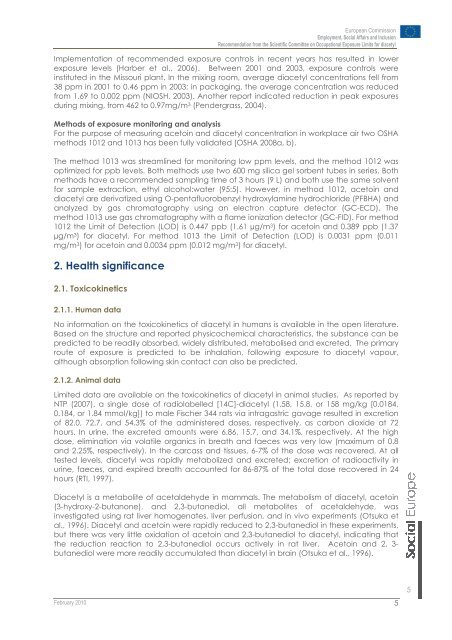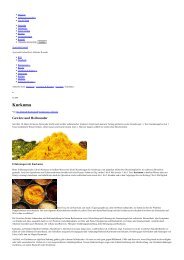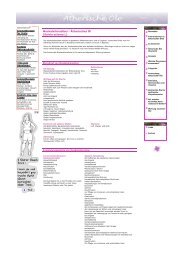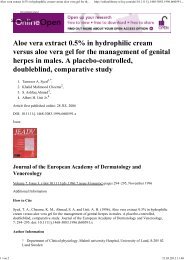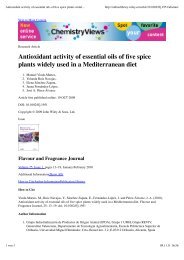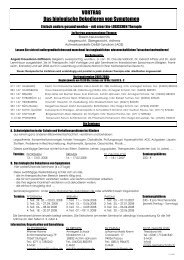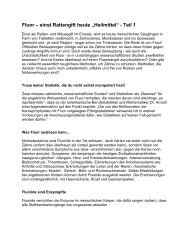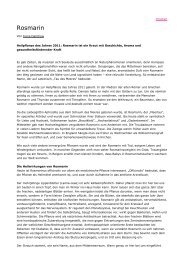Recommendation from the Scientific Committee on Occupational ...
Recommendation from the Scientific Committee on Occupational ...
Recommendation from the Scientific Committee on Occupational ...
Create successful ePaper yourself
Turn your PDF publications into a flip-book with our unique Google optimized e-Paper software.
February 2010<br />
European Commissi<strong>on</strong><br />
Employment, Social Affairs and Inclusi<strong>on</strong><br />
<str<strong>on</strong>g>Recommendati<strong>on</strong></str<strong>on</strong>g> <str<strong>on</strong>g>from</str<strong>on</strong>g> <str<strong>on</strong>g>the</str<strong>on</strong>g> <str<strong>on</strong>g>Scientific</str<strong>on</strong>g> <str<strong>on</strong>g>Committee</str<strong>on</strong>g> <strong>on</strong> Occupati<strong>on</strong>al Exposure Limits for diacetyl<br />
Implementati<strong>on</strong> of recommended exposure c<strong>on</strong>trols in recent years has resulted in lower<br />
exposure levels (Harber et al., 2006). Between 2001 and 2003, exposure c<strong>on</strong>trols were<br />
instituted in <str<strong>on</strong>g>the</str<strong>on</strong>g> Missouri plant. In <str<strong>on</strong>g>the</str<strong>on</strong>g> mixing room, average diacetyl c<strong>on</strong>centrati<strong>on</strong>s fell <str<strong>on</strong>g>from</str<strong>on</strong>g><br />
38 ppm in 2001 to 0.46 ppm in 2003; in packaging, <str<strong>on</strong>g>the</str<strong>on</strong>g> average c<strong>on</strong>centrati<strong>on</strong> was reduced<br />
<str<strong>on</strong>g>from</str<strong>on</strong>g> 1.69 to 0.002 ppm (NIOSH, 2003). Ano<str<strong>on</strong>g>the</str<strong>on</strong>g>r report indicated reducti<strong>on</strong> in peak exposures<br />
during mixing, <str<strong>on</strong>g>from</str<strong>on</strong>g> 462 to 0.97mg/m 3 (Pendergrass, 2004).<br />
Methods of exposure m<strong>on</strong>itoring and analysis<br />
For <str<strong>on</strong>g>the</str<strong>on</strong>g> purpose of measuring acetoin and diacetyl c<strong>on</strong>centrati<strong>on</strong> in workplace air two OSHA<br />
methods 1012 and 1013 has been fully validated (OSHA 2008a, b).<br />
The method 1013 was streamlined for m<strong>on</strong>itoring low ppm levels, and <str<strong>on</strong>g>the</str<strong>on</strong>g> method 1012 was<br />
optimized for ppb levels. Both methods use two 600 mg silica gel sorbent tubes in series. Both<br />
methods have a recommended sampling time of 3 hours (9 L) and both use <str<strong>on</strong>g>the</str<strong>on</strong>g> same solvent<br />
for sample extracti<strong>on</strong>, ethyl alcohol:water (95:5). However, in method 1012, acetoin and<br />
diacetyl are derivatized using O-pentafluorobenzyl hydroxylamine hydrochloride (PFBHA) and<br />
analyzed by gas chromatography using an electr<strong>on</strong> capture detector (GC-ECD). The<br />
method 1013 use gas chromatography with a flame i<strong>on</strong>izati<strong>on</strong> detector (GC-FID). For method<br />
1012 <str<strong>on</strong>g>the</str<strong>on</strong>g> Limit of Detecti<strong>on</strong> (LOD) is 0.447 ppb (1.61 µg/m 3 ) for acetoin and 0.389 ppb (1.37<br />
µg/m 3 ) for diacetyl. For method 1013 <str<strong>on</strong>g>the</str<strong>on</strong>g> Limit of Detecti<strong>on</strong> (LOD) is 0.0031 ppm (0.011<br />
mg/m 3 ) for acetoin and 0.0034 ppm (0.012 mg/m 3 ) for diacetyl.<br />
2. Health significance<br />
2.1. Toxicokinetics<br />
2.1.1. Human data<br />
No informati<strong>on</strong> <strong>on</strong> <str<strong>on</strong>g>the</str<strong>on</strong>g> toxicokinetics of diacetyl in humans is available in <str<strong>on</strong>g>the</str<strong>on</strong>g> open literature.<br />
Based <strong>on</strong> <str<strong>on</strong>g>the</str<strong>on</strong>g> structure and reported physicochemical characteristics, <str<strong>on</strong>g>the</str<strong>on</strong>g> substance can be<br />
predicted to be readily absorbed, widely distributed, metabolised and excreted. The primary<br />
route of exposure is predicted to be inhalati<strong>on</strong>, following exposure to diacetyl vapour,<br />
although absorpti<strong>on</strong> following skin c<strong>on</strong>tact can also be predicted.<br />
2.1.2. Animal data<br />
Limited data are available <strong>on</strong> <str<strong>on</strong>g>the</str<strong>on</strong>g> toxicokinetics of diacetyl in animal studies. As reported by<br />
NTP (2007), a single dose of radiolabelled [14C]-diacetyl (1.58, 15.8, or 158 mg/kg [0.0184,<br />
0.184, or 1.84 mmol/kg]) to male Fischer 344 rats via intragastric gavage resulted in excreti<strong>on</strong><br />
of 82.0, 72.7, and 54.3% of <str<strong>on</strong>g>the</str<strong>on</strong>g> administered doses, respectively, as carb<strong>on</strong> dioxide at 72<br />
hours. In urine, <str<strong>on</strong>g>the</str<strong>on</strong>g> excreted amounts were 6.86, 15.7, and 34.1%, respectively. At <str<strong>on</strong>g>the</str<strong>on</strong>g> high<br />
dose, eliminati<strong>on</strong> via volatile organics in breath and faeces was very low (maximum of 0.8<br />
and 2.25%, respectively). In <str<strong>on</strong>g>the</str<strong>on</strong>g> carcass and tissues, 6-7% of <str<strong>on</strong>g>the</str<strong>on</strong>g> dose was recovered. At all<br />
tested levels, diacetyl was rapidly metabolized and excreted; excreti<strong>on</strong> of radioactivity in<br />
urine, faeces, and expired breath accounted for 86-87% of <str<strong>on</strong>g>the</str<strong>on</strong>g> total dose recovered in 24<br />
hours (RTI, 1997).<br />
Diacetyl is a metabolite of acetaldehyde in mammals. The metabolism of diacetyl, acetoin<br />
(3-hydroxy-2-butan<strong>on</strong>e), and 2,3-butanediol, all metabolites of acetaldehyde, was<br />
investigated using rat liver homogenates, liver perfusi<strong>on</strong>, and in vivo experiments (Otsuka et<br />
al., 1996). Diacetyl and acetoin were rapidly reduced to 2,3-butanediol in <str<strong>on</strong>g>the</str<strong>on</strong>g>se experiments,<br />
but <str<strong>on</strong>g>the</str<strong>on</strong>g>re was very little oxidati<strong>on</strong> of acetoin and 2,3-butanediol to diacetyl, indicating that<br />
<str<strong>on</strong>g>the</str<strong>on</strong>g> reducti<strong>on</strong> reacti<strong>on</strong> to 2,3-butanediol occurs actively in rat liver. Acetoin and 2, 3butanediol<br />
were more readily accumulated than diacetyl in brain (Otsuka et al., 1996).<br />
5<br />
5


